9:10 PM
Author |
I grew up as a ballerina. Ballet was my life, my identity. When I discovered a passion for medicine, many people questioned how I could reconcile dual interests in both ballet and medicine- such seemingly different disciplines. However, since entering the field of medicine, I have developed a fondness for the differences between these two worlds, while also continually being struck by the parallels I find every day between the two.
Still enamored by both ballet and medicine, I have come to appreciate even more the opportunities I have had both in tutus and in scrubs, and further come to relish even more so the similarities I find across both. It seemed a natural step for me to join the Medical Humanities Path of Excellence at the University of Michigan Medical School, one of several interest-based pathways students have the opportunity to join. In the Medical Humanities Path of Excellence, I've connected with likeminded classmates and faculty also interested in the arts and the intersection of the humanities and medical sciences. For my Capstone for Impact, I wanted to create a lasting art exhibit that would allow me to share my experience and connect with others who may have similar experiences blending their worlds and passions across disciplines.
For my project, I dove into a new form of art for me - photography! This exhibit depicts my journey integrating my love for ballet and medicine. Through the process of staging and capturing these images, I came to realize even more similarities between dance and medicine than I had before. Trying to integrate such seemingly different objects and imagery, I was struck by both the tension and dichotomy as well as the harmony and blending of the two worlds. When ideas for certain images came to mind, I was surprised each time by how seamlessly the scenes came together. My two worlds blended together even more smoothly than I ever imagined, something I have experienced in my life over the past few years as well as through the journey of taking these photos.
The collection begins with still life images, consisting of objects typically associated with medicine strewn with subjects classically associated with ballet and the arts, creating a playful tension between the two while also showing how seamlessly they can appear to integrate. These first few images are meant to be subtle. The photos become increasingly more forward in demonstrating the melding of ballet and medicine as the collection progresses. Furthermore, the editing and lighting in addition to the subjects become more dramatic in each subsequent photo. This parallels my own feelings toward reconciling my passions for art and medicine. Initially, I tried to keep my worlds separate and not allude to one or the other my dual allegiances. However, as is demonstrated through the images, over time I have become bolder in demonstrating my passions for both dance and medicine, and finding ways to ensure both remain a part of my life.
This exhibit is meant to evoke the feeling behind my personal transition from one career to the next, from ballerina to doctor. My hope is that this collection will inspire others to give thought to ways in which seemingly dichotomous aspects of their lives may be more similar or harmonious than they once thought, and to find beauty in the contrast. I had a blast creating this project and was delighted by how well received it was by my peers and mentors. This is just one example of the incredibly unique opportunities allotted to University of Michigan med students.
Here is my photo collection - I hope you enjoy!
1. Tutus and S2's
Early in medical school, our white coats and stethoscopes feel like a costume we don. These items feel like props from a child's game of dress-up when we first put them on, but over time they become as much a part of us as a sign of our occupation. This photograph shows a stethoscope hanging amidst a wardrobe of ballet tutus and costumes. A tutu transforms the ballerina into a character for the audience and into a new version of herself for the performance. Similarly, the stethoscope is itself a symbol of medicine that transforms us from students into doctors.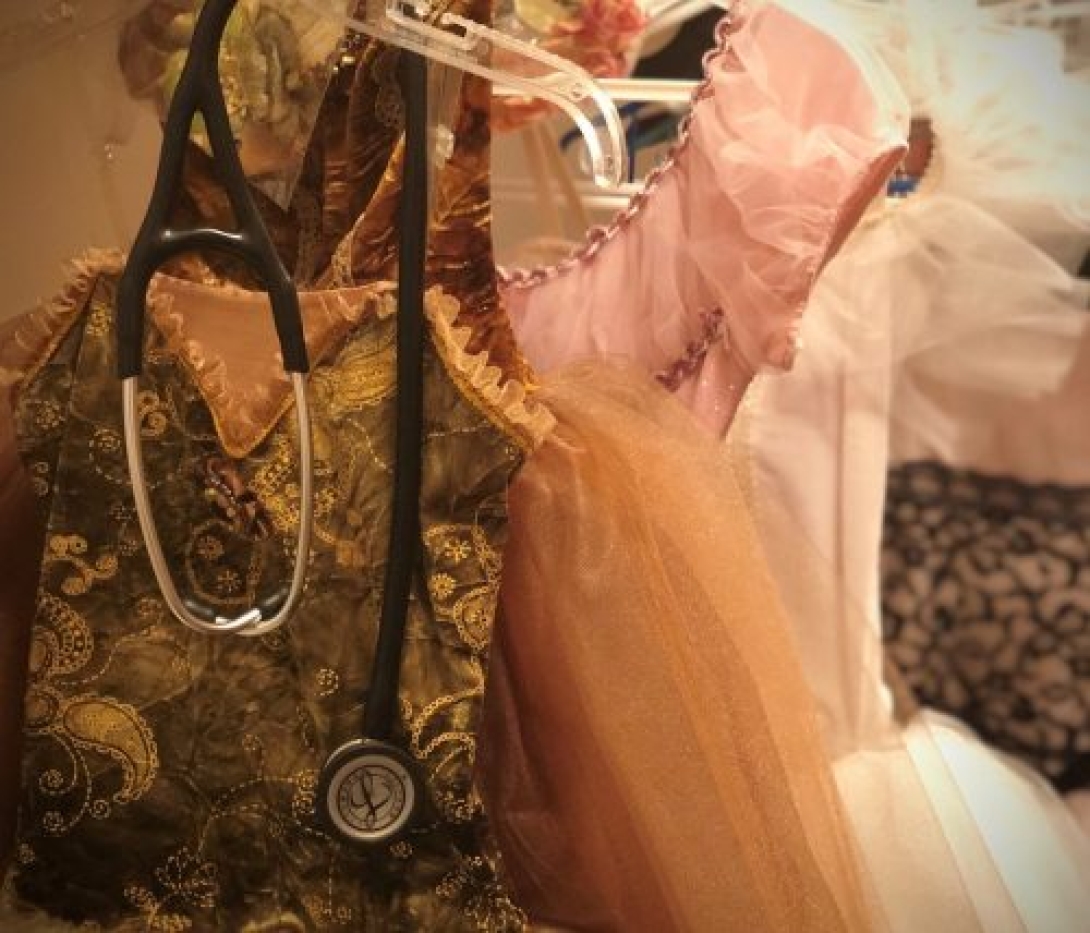
2. Backstage
Putting on stage makeup and doing one's hair becomes somewhat of a pre-show ritual for dancers. While execution of the choreography takes precedence for the audience, the hair and makeup are crucial to the performances well and also take time and dedication to perfect. Medical students spend countless hours training in physical exam maneuvers to prepare for seeing patients. While the reflex hammer may be an infrequently used tool amidst our equipment, it represents the tireless hours of preparation that go into evaluating, diagnosing, and treating each patient just as the makeup indicates the disciplined ritual of dancers preparing for each show with care.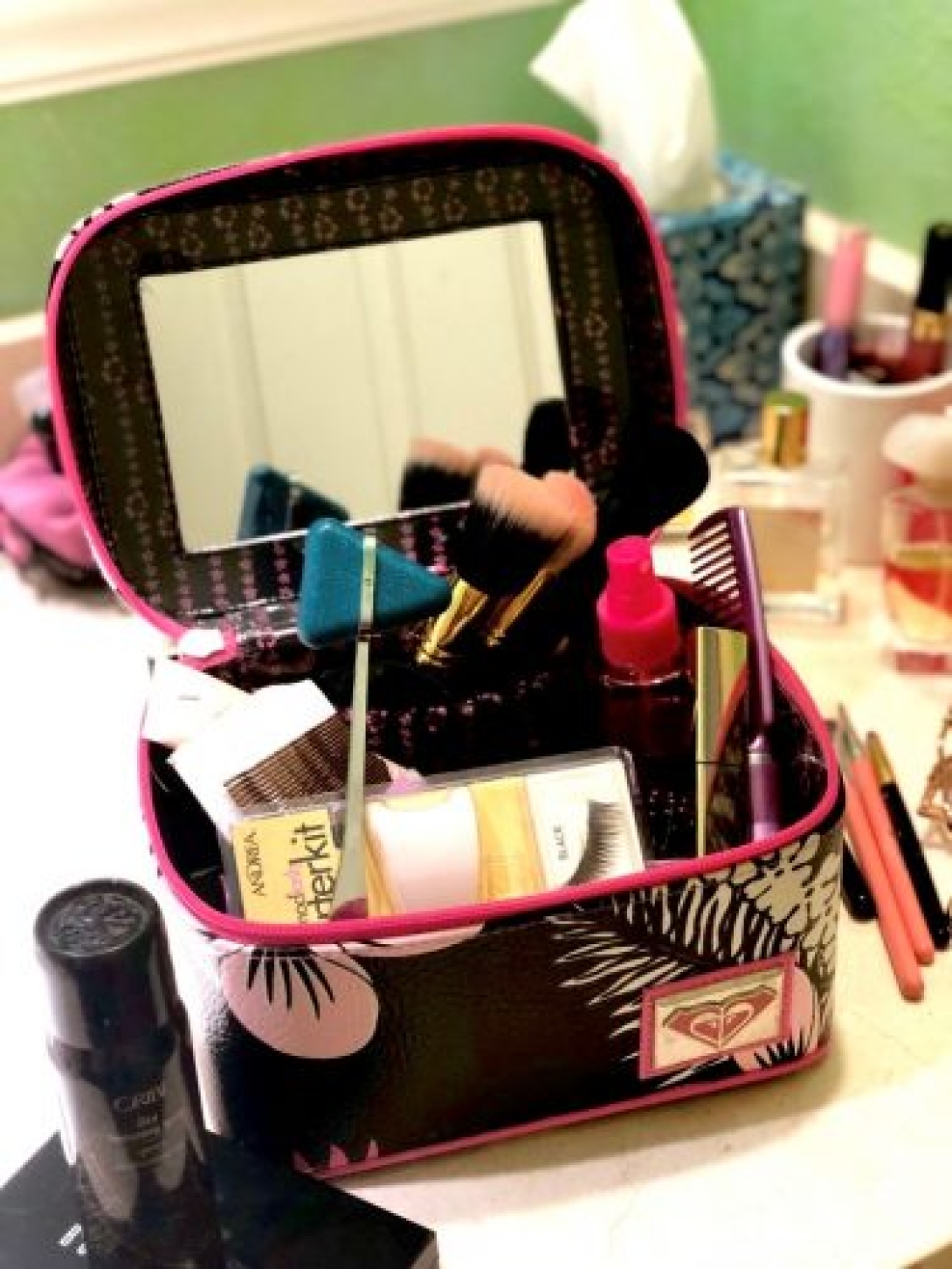
3. E sharp
Music is an integral part of dance; it drives the movement and emotion of choreography. Here an eye chart is casually placed next to sheet music, accompanied by a tuning fork. This image is meant to evoke the playful dichotomy of the science of medicine next to the art of music, tied together by the tuning fork, which is used in both.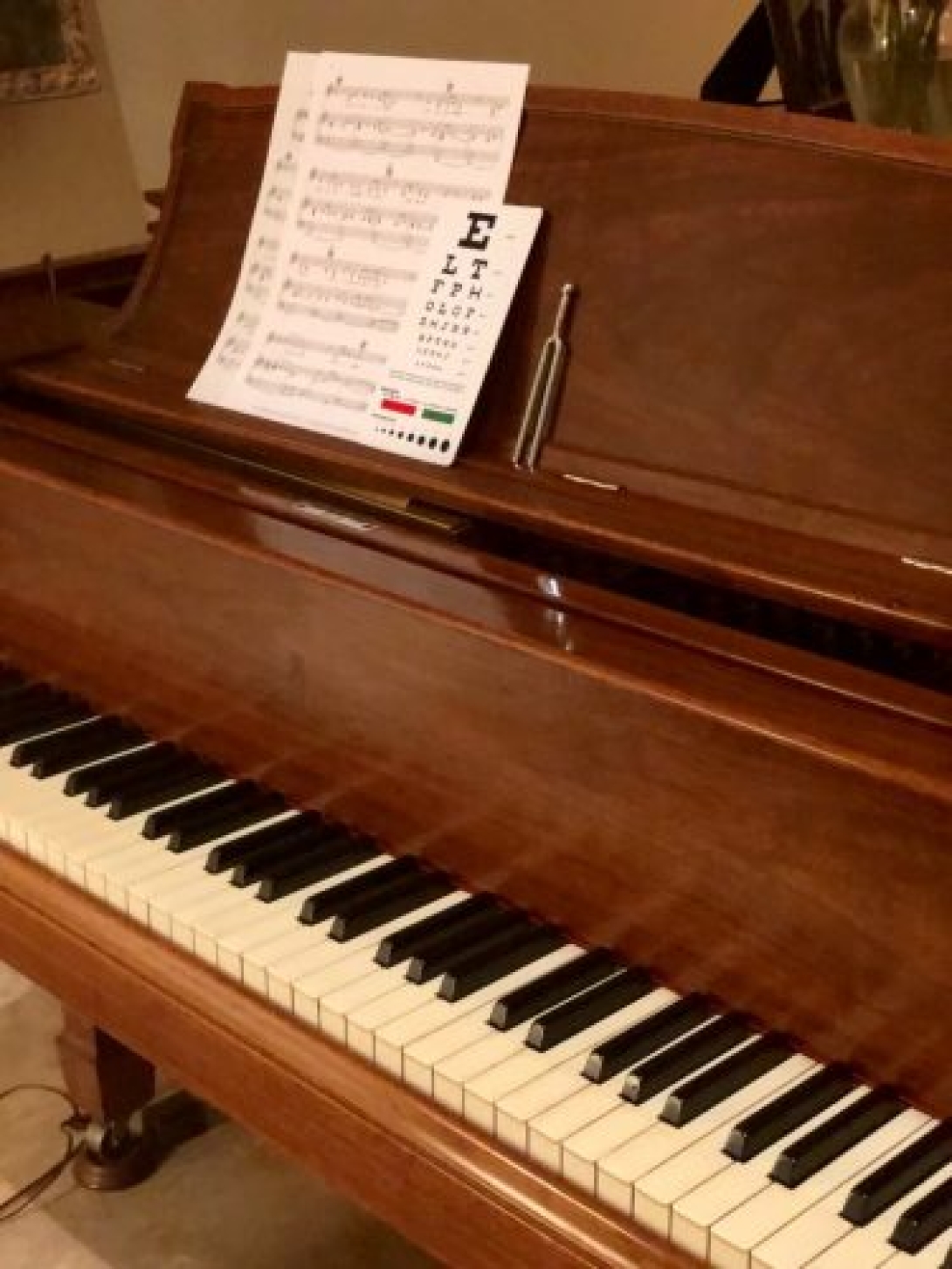
4. Simple. Interrupted.
This photograph shows a surgical needle driver and sutures being used to stitch a ballet shoe. This is meant to show a direct integration of the passion and skills of medicine and ballet complementing each other.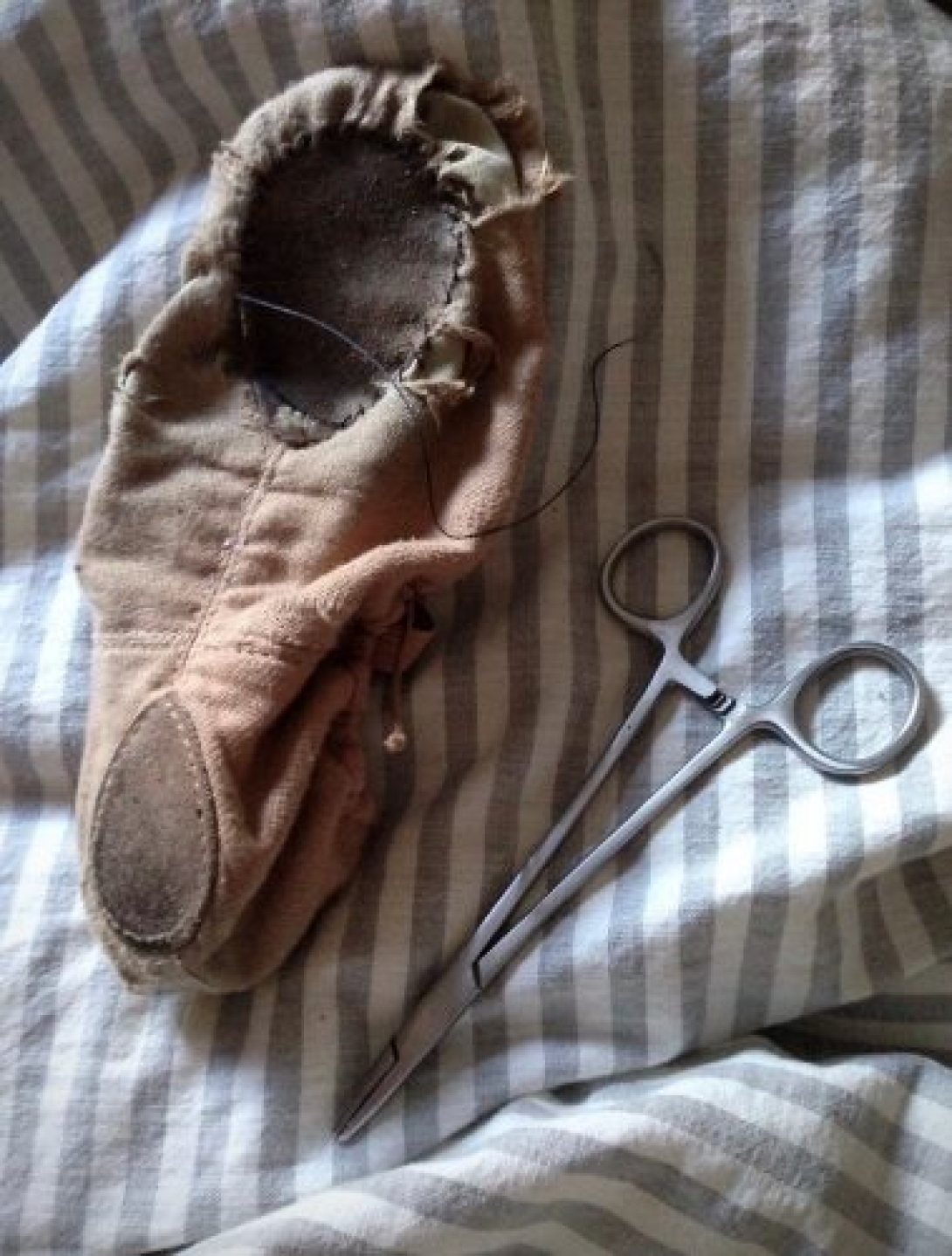
5. Breaking Scrub
The mayo tray with its surgical instruments is the surgeon's toolbox. A ballerina's pointe shoes are the primary tool she uses in her craft. This photograph displays a pair of pointe shoes among medical instruments and supplies on a surgical tray, exemplifying the contrast of the satin shoes amongst the cold metal instruments. While medicine, and surgery in particular, are often focused on as a hard science, they too are an art as physicians individually find solutions to the endless novel problems that patients present.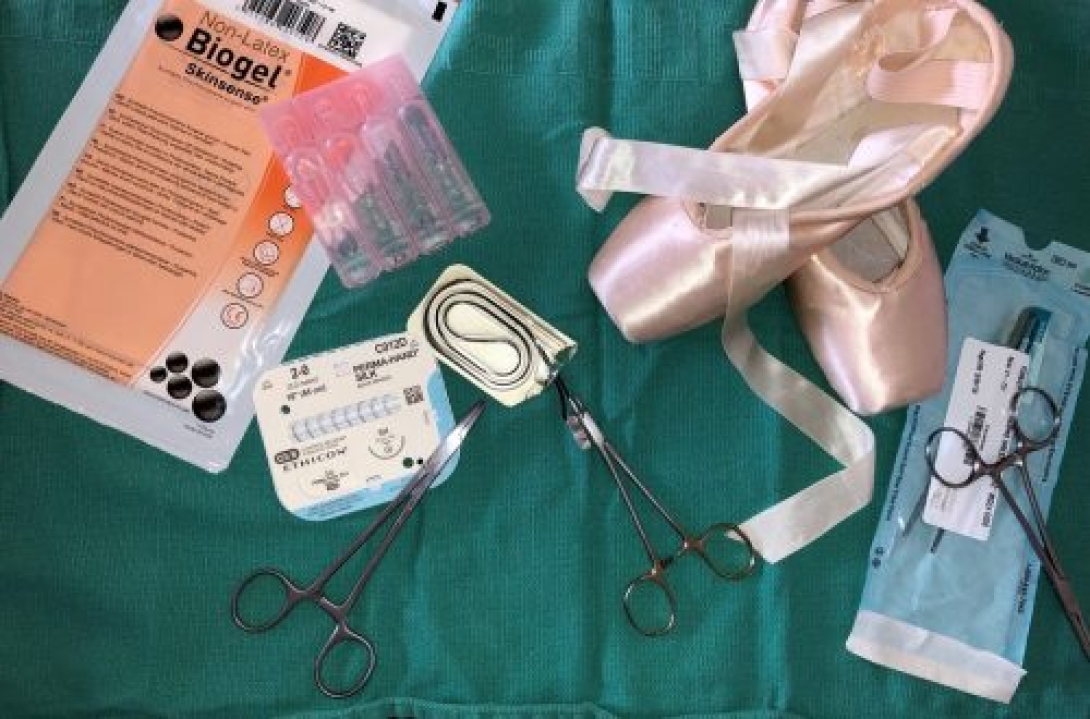
6. On Call
Here a dancer stands en pointe in a white coat, holding a stethoscope at her side. This image is meant to evoke a sense of both the tension and reconciliation of these two seemingly opposite worlds colliding.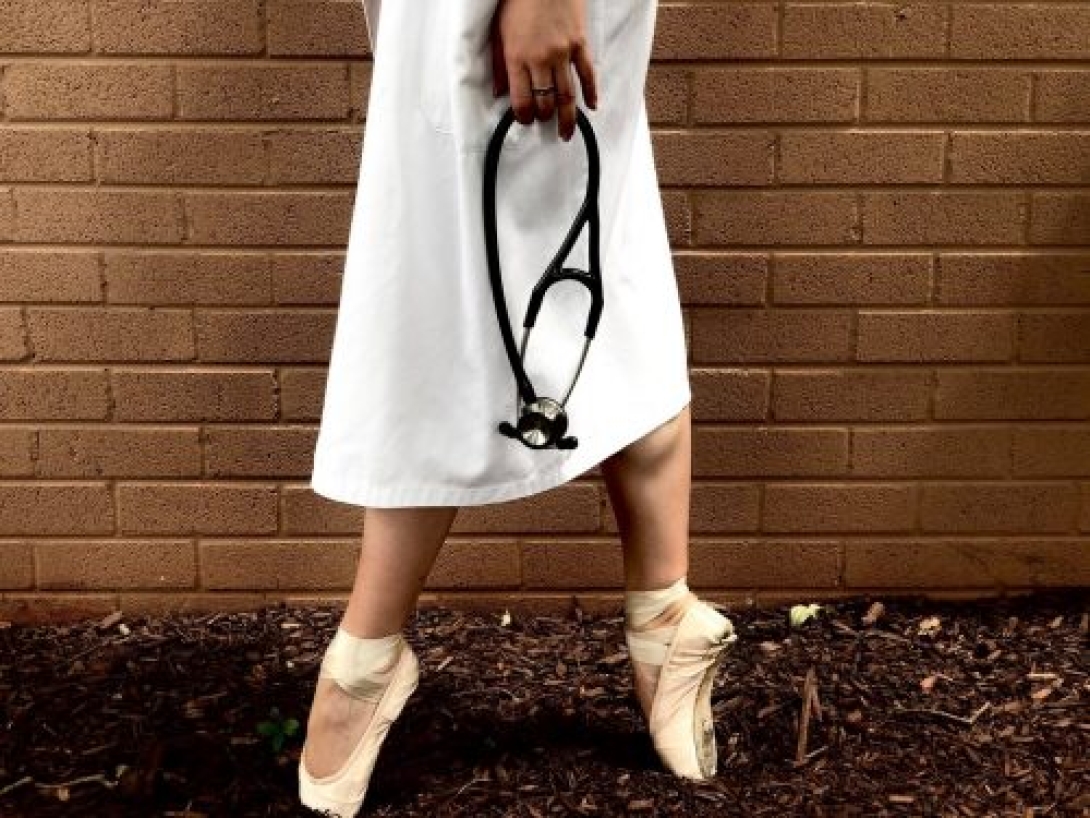
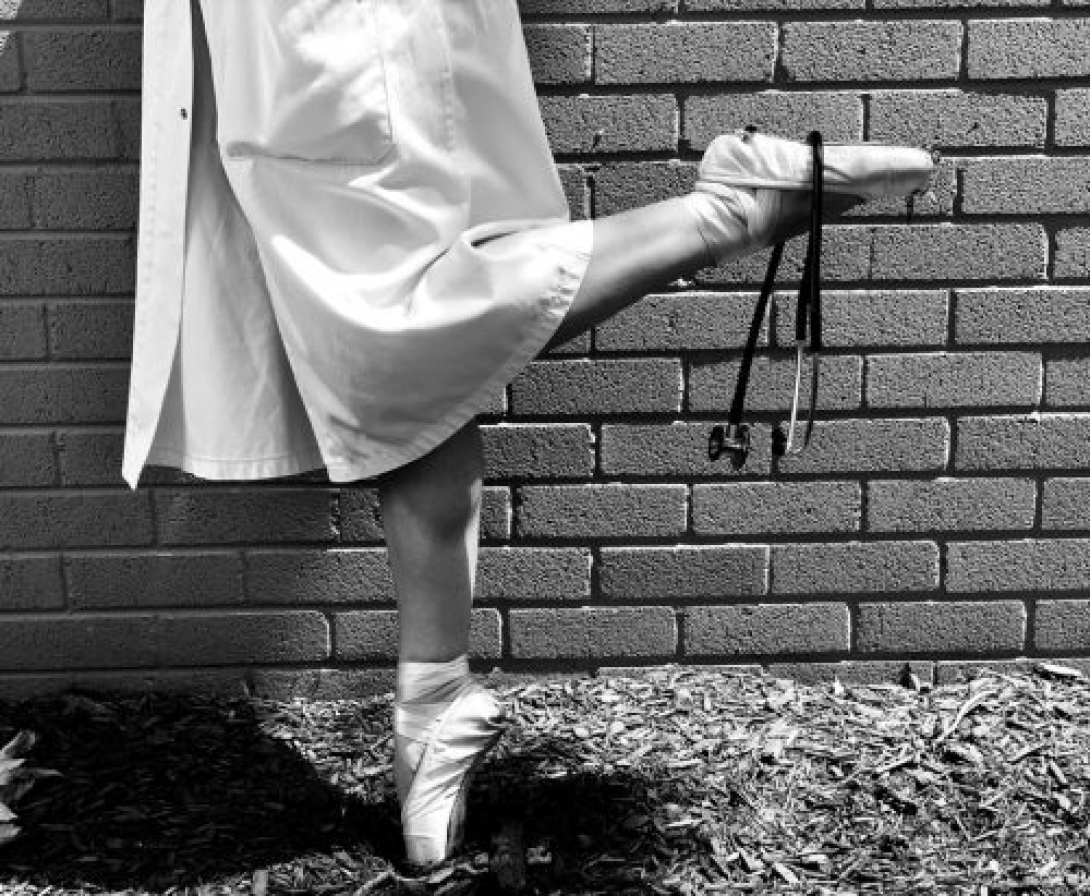

Department of Communication at Michigan Medicine
Want top health & research news weekly? Sign up for Health Lab’s newsletters today!





